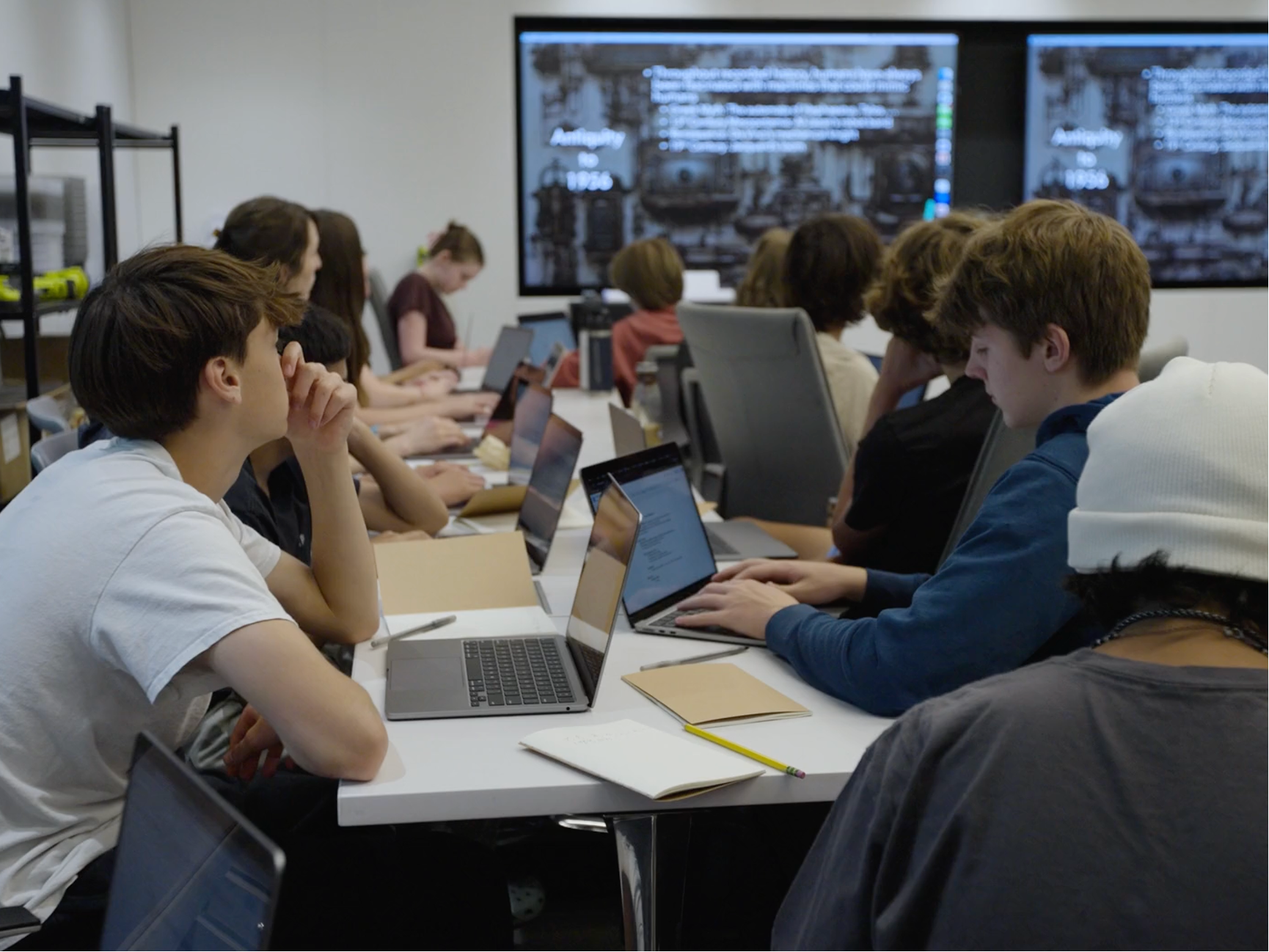“Tech is only useful if it serves the needs of many, and helps us solve problems that would be difficult or impossible to solve without it.”
As students wrapped up their three-week Immersive course focused on a key topic in San José, they had their final lesson with guest teacher Kevin Scott about Artificial Intelligence. In the first session, Kevin shared about the long history of human fascination with automata, early advances in computer science for problem-solving, and ways that current artificial intelligence programs are both similar to, and different from, earlier software. Students looked at examples of problems that are difficult for ChatGPT and seem easy for humans, and also problems that are hard for people and easy for AI. We did an activity to test our own human, then Python’s, then ChatGPT’s ability to complete a simple number ordering problem and talked about the processes behind each.
This week, students looked at ways AI is currently being used in their day-to-day lives, with or without our thinking about it, and also the most promising current areas where AI can make a difference for human thriving. After learning about the training modules, datasets, and metaprompts behind modern chat applications like Bard, Claude, and ChatGPT, students worked with partners to come up with a problem they thought ChatGPT could help them solve. Their ideas ranged from, “How can I create translation services to make healthcare more accessible?” to “How can I take over the job of being Microsoft CTO?”
As we tested some of their ideas all together, students noted ways the application is much faster and more capable, and also its significant limitations. Students noticed that these searches generate a lot of suggestions, caveats, and subtopics (“It’s like you all. It shares a lot of different ideas”). Then they practiced some prompt-engineering, to take the application’s initial response and make it more useful. “It can be a really good brainstorming tool. And what you want to do is get it closer and closer to an actual thing that can solve your problem.”
It can be a really good brainstorming tool. And what you want to do is get it closer and closer to an actual thing that can solve your problem.
Students closed by sharing take-aways and ideas for what responsible AI use should be like.
“It might be able to help people with homelessness, getting access to food or resources they are entitled to but don’t know how to get.”
And, “What about AI and water conservation?”
Whether they become computer scientists or not, Kevin parted by reminding students that becoming familiar with AI will help them be informed citizens as we all face the challenge and opportunity of deciding how it will work to promote human thriving. We’re so grateful to Kevin, and the many other parents and community members who supported our students’ Immersives Study!

